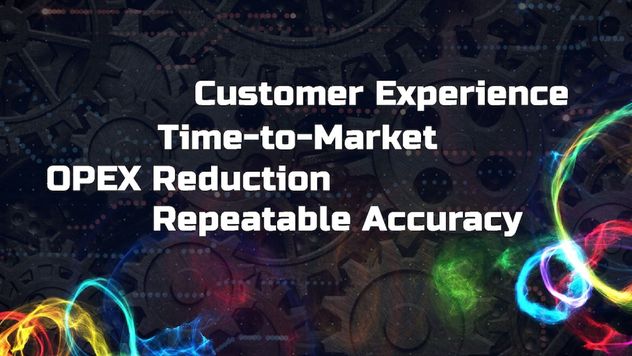
Jump To Section
Introduction
The financial services industry is on the cusp of a dramatic transformation, driven by the rapid advancements and growing influence of Artificial Intelligence (AI). Understanding and harnessing the power of AI is no longer a luxury but a necessity for banks seeking to remain competitive, deliver exceptional customer experiences, and thrive in an increasingly digital world.
To shed light on what this future holds, I sat down with Yannick Lallement, Chief AI Officer at Scotiabank, one of North America’s largest financial institutions. With a PhD in Artificial Intelligence and a career spanning academia and the private sector, Lallement brings a unique perspective to the intersection of AI and banking.
In this guide, we’ll draw upon Lallement’s insights to explore the potential impact of AI on the future of banking. We’ll examine key trends, explore emerging use cases, and provide practical considerations for financial leaders seeking to navigate this exciting and transformative period.
The Evolving Landscape of AI in Banking
While AI has already made inroads in automating back-office tasks and improving operational efficiency in banking, its future impact will extend far beyond these early applications.
One of the most significant developments driving this evolution is the rise of Large Language Models (LLMs). These AI models, trained on massive datasets of text and code, possess an impressive ability to comprehend and generate human-like language. This capability makes LLMs particularly well-suited for tasks that were once considered the exclusive domain of humans, such as customer service, document analysis, and even strategic decision-making.
As Yannick Lallement highlights, “What the LLMs can do is evolving pretty much, literally, every day.” This rapid evolution means that banks must continually adapt and embrace new possibilities to stay ahead of the curve.
Lallement points out that the key to leveraging the power of LLMs lies in having “good source data.” As AI becomes more sophisticated and integrated into core banking functions, the ability to collect, manage, and analyze data becomes a strategic imperative. Banks that can effectively utilize their data will be best positioned to unlock the full potential of LLMs and gain a competitive advantage in the future of finance.
Transforming the Customer Experience
The future of banking is undeniably customer-centric. Banks that prioritize delivering exceptional, personalized customer experiences will be the ones that attract and retain customers in a competitive market. And AI, especially LLMs, has the potential to revolutionize how banks interact with and serve their customers.
Imagine a banking experience where every interaction feels personalized, relevant, and tailored to your specific needs. AI is making this vision a reality. By analyzing vast amounts of customer data—transaction history, financial goals, risk tolerance, and even communication preferences—AI can help banks understand their customers on a deeper level than ever before. This knowledge empowers banks to move beyond generic financial products and services, offering hyper-personalized solutions that resonate with individual needs and aspirations.
The rise of AI-powered chatbots and virtual assistants is already transforming customer service in banking. These intelligent systems can handle routine inquiries, answer questions, provide financial guidance, and even resolve issues 24/7. As these technologies become more sophisticated, they will become increasingly adept at understanding complex requests, offering personalized recommendations, and providing a seamless, intuitive customer experience across all channels.
AI also allows banks to move beyond reactive customer service to a more proactive and predictive approach. By analyzing customer data, AI can anticipate needs, identify potential risks, and recommend relevant products or services before the customer even realizes they need them. This proactive approach not only enhances customer satisfaction but also strengthens relationships and builds trust.
Revolutionizing Bank Operations

Beyond enhancing the customer experience, AI is poised to revolutionize how banks operate behind the scenes. From streamlining processes to uncovering hidden insights and empowering employees, AI offers the potential for greater efficiency, reduced costs, and improved decision-making across all areas of a bank’s operations.
One of the most immediate impacts of AI in banking is the continued automation of repetitive, rule-based tasks. Processes such as loan applications, fraud detection, KYC (Know Your Customer) checks, compliance reporting, and risk assessment can be significantly streamlined with AI-powered solutions. This automation not only frees up valuable employee time for more strategic activities but also reduces errors, speeds up processing times, and ultimately lowers operational costs.
The sheer volume of data generated in banking presents both a challenge and an opportunity. AI excels at analyzing these vast datasets, uncovering hidden patterns and trends that would be impossible for humans to detect. These data-driven insights can inform a wide range of decisions, from developing new products and services to optimizing marketing strategies and managing risk more effectively.
AI isn’t about replacing human judgment; it’s about augmenting it. By providing bank employees with AI-powered tools that offer data-driven insights, predictive analytics, and real-time risk assessments, AI can empower them to make faster, more informed decisions.
This means loan officers can assess creditworthiness more accurately, financial advisors can offer personalized investment recommendations, and risk managers can identify and mitigate potential threats more proactively.
Navigating the Future of AI in Banking
The transformative potential of AI in banking is undeniable, but harnessing that potential requires more than simply implementing the latest technologies. Banks must adopt a strategic, forward-thinking approach that embraces innovation, invests in talent, and addresses the ethical considerations surrounding AI deployment.
First and foremost, banks must cultivate a culture that embraces innovation and continuous learning. This means fostering an environment where employees are encouraged to explore new technologies, experiment with AI solutions, and view change as an opportunity for growth. Leadership must champion AI initiatives, providing the necessary resources and support to drive adoption across the organization.
As AI becomes increasingly integrated into banking, the skills needed to thrive in this new landscape will evolve. Banks must invest in their workforce, providing training and upskilling opportunities to equip employees with the knowledge and expertise to work effectively alongside AI. Attracting top talent with backgrounds in AI, data science, and related fields will also be crucial to driving innovation and staying ahead of the curve.
The increasing reliance on AI in banking raises important ethical considerations. Banks must ensure that AI systems are developed and deployed responsibly, addressing concerns surrounding bias in algorithms, protecting the privacy and security of customer data, and operating with transparency in how AI is being used to make decisions that impact people’s financial lives.
Takeaway
The future of banking belongs to those who embrace AI not as a replacement for human ingenuity, but as a powerful tool to enhance it. By fostering a culture of innovation, investing in their workforce, and prioritizing ethical AI development, banks can navigate this transformative era and create a future where technology empowers both institutions and the customers they serve.
If you found these trends insightful, be sure to tune into the full episode of Behind the Growth for a conversation you do not want to miss!
Link to podcast
Complexities of AI Implementation in Banking
You can also tune in on your favourite channel:



